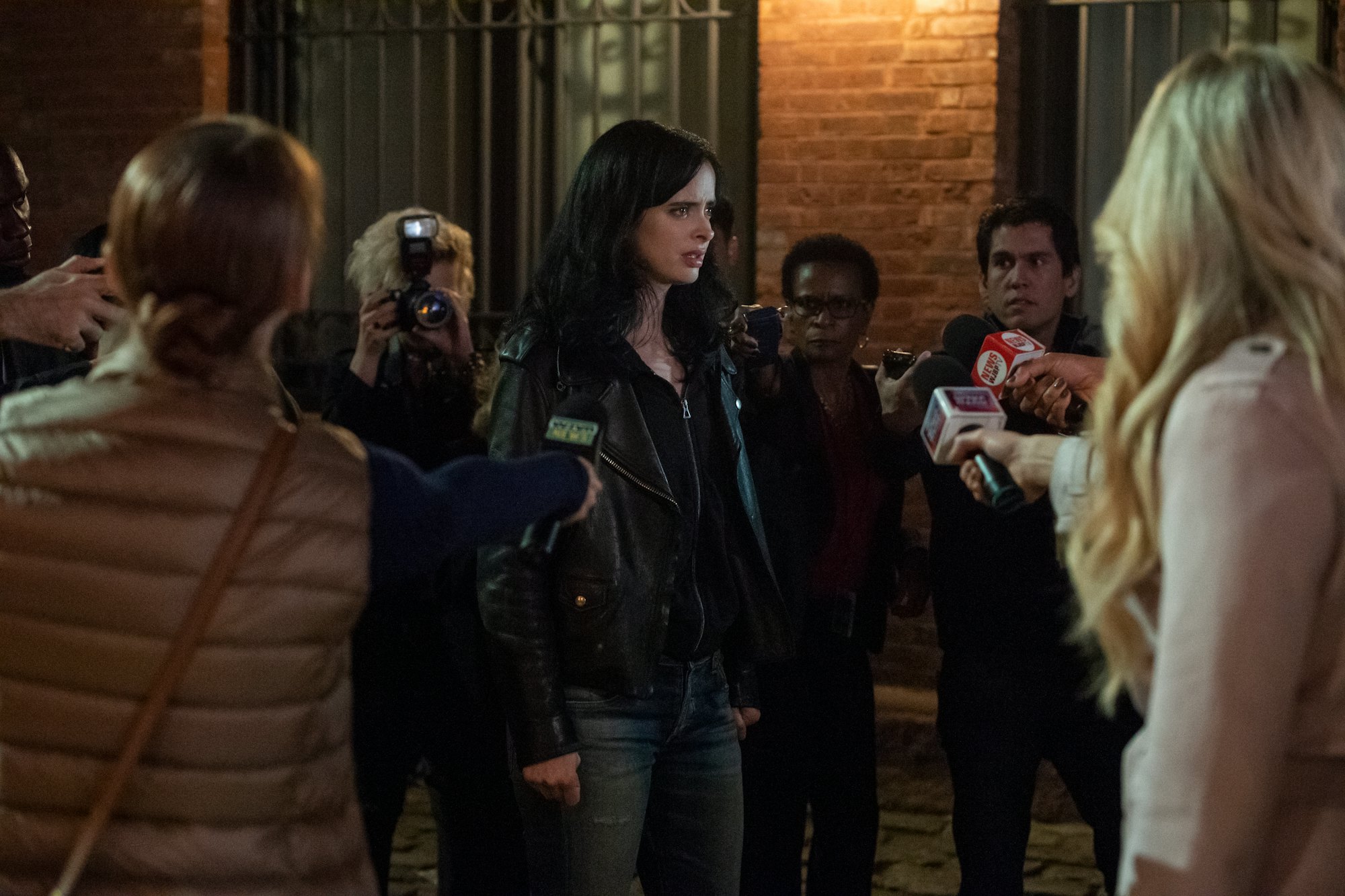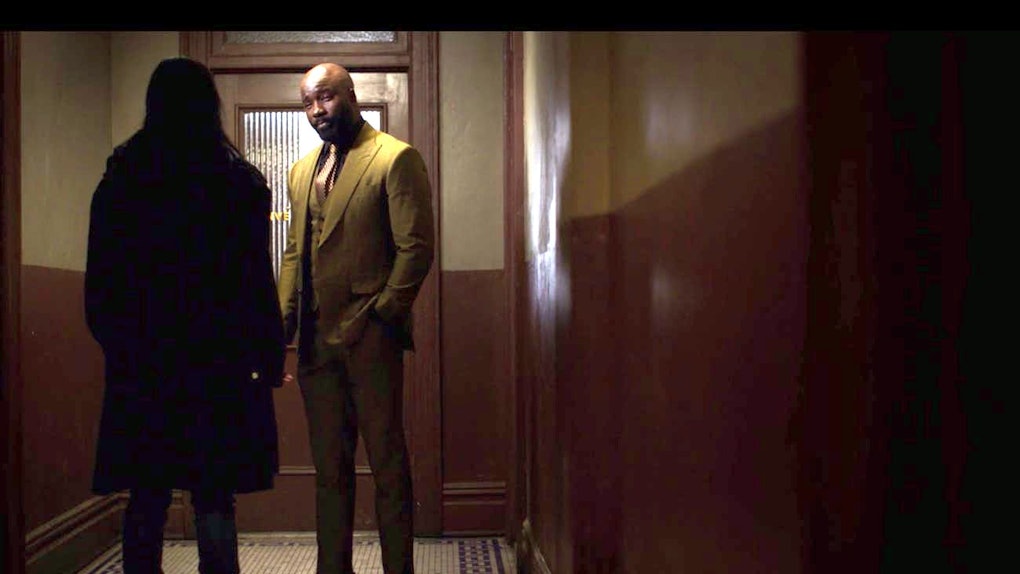We’ve come to the final entry in this series. Shortly after the second season of Punisher, it was announced that all Marvel Netflix shows were cancelled and further more, it would be two years before Marvel Studios would be allowed to use any of the characters due to its deal with Netflix. It was a massive blow. Jessica Jones’ third season, like the final seasons of Daredevil and Punisher, had very little promotion; it was almost as if Netflix wanted to bury these shows and forget about them. Disney+ was on the horizon, featuring shows centered around a lot of popular characters from various MCU films. Because of all this and a lackluster second season from Jessica Jones, there was very little hype for this season and the Netflix Marvel shows ended with little fanfare.
Well, that was depressing. Moving on…

This season, as expected, picked up where the last season ended and as usual, there will be spoilers ahead. Like the first season, this one tackled real world issues such as the Me Too movement as well as the rise of Incels. I also liked that the show would have one episode take place from Jessica’s point of view and the next episode would show the same events from Trish’s point of view. I always like seeing that in fiction.
Like the previous season, I was invested in the storylines involving Malcolm and Trish. At the start of this season, Malcolm was still working for Hogarth, protecting her slimy clientele. Throughout the season, he struggled with doing the right thing, but before that happened, he found himself cheating on his girlfriend with a prostitute, protecting Trish’s vigilante identity, and generally doing things that went against his better judgment. Slowly but surely, he realized he didn’t like what he was becoming so he set out to undo all the damage he caused: he quit Hogarth’s firm, tried to help Trish get her act together, and ended up in charge of Alias Investigation. Out of all the Jessica Jones supporting characters, I think I liked his arc the best because it was interesting to watch him go from a drug addict to an accomplished private investigator. As for Trish, she finally adopted the Hellcat persona after multiple seasons of build up (well, she never called herself Hellcat… because Netflix). I liked that she started off taking down lowly phone thieves and graduated to larger villains with her rage growing to the point where she was willing to kill anyone who got in her way. It was a nice build up toward her becoming a Punisher-style vigilante out for blood. Watching her from the first season to the third was a really great trajectory. As for Hogarth, her storyline was more of the same, really. She was still dying, she had yet another affair that involved a former lover, people ended up seriously injured due to said affair, and she was willing to use the villains to improve her love life. Hogarth just needed to turn into a cat lady because no one was safe otherwise.
Jessica’s storyline was a big improvement over her storyline the previous season as well. She was beginning to struggle with the idea of whether or not she was a hero, which was something that had been alluded to in the first two seasons as well as The Defenders. This part of her character progressed a bit more this time around, however, if the final scene was anything to go by (more on that later). Her love interest was better this season since she found herself involved with Erik Geldon, a man with unexplained empathy powers. Geldon was an obscure villain in the comics but there is little connection between the two characters so I won’t get into too much detail here. Geldon’s empathic powers allowed him to blackmail people he could sense had done terrible things, which was how he made a living. He and Jessica both struggled with the idea of using their powers for good in one form or another, which made them work well together. Unfortunately, his powers got the attention of the main villain: The Foolkiller.
The Bad Guys Are Better This Season

As I mentioned before, the second season of Jessica Jones had very lackluster villains so this season was a good change of pace. In the comics, Gregory Salinger was the second person to use the name Foolkiller: an identity that was used by both vigilantes and serial killers alike, depending on their levels of (in)sanity. Not that they call him Foolkiller, obviously. I mean, it could have been used as a pseudonym a la Zodiac Killer or BTK Killer, to describe an unknown psychopath that was gaining media attention, but the show refused to do that. Seriously, in the first season, they mentioned Killgrave was a codename he gave himself… despite Killgrave being the dude’s actual birthname in the comic. His name was Zebadiah Killgrave and his codename was Purple Man. The show gave him a different real name and just turned Killgrave into a supervillain name for whatever reason. Otherwise, the show ran away from codenames even when they made sense to use. Sometimes Netflix was confusing. Oh well.
Anyway, in the show, Salinger was a serial killer who targeted people with powers or were just talented. It was an interesting foil to Killgrave. Both were narcissistic psychopaths who played cat-and-mouse with Jessica and represented misogyny in different ways. Killgrave represented powerful men who got away with rape while Salinger represented the average joe who got pissed off and became an Incel. Killgrave was obsessed with special people and wanted to control them while Salinger hated super powered people (and other “cheaters”) and wanted to kill them. Even when it came to their personal tastes, they were interesting to compare and contrast as Killgrave always liked the finer things and wore expensive suits while Salinger was strongly anti-materialistic and wore sweatpants. That said, the actor playing Salinger wasn’t as strong of an actor as David Tennant and the character didn’t have Killgrave’s dark wit, so he wasn’t as interesting (but he was more compelling than Jessica’s mom).
As for Trish, like I said, I liked watching her come into her own as an eventual enemy of Jessica’s. Killing Trish’s mother pushed her off the deep end and gave her a good excuse to go Frank Castle on Salinger and others. The show got extra props for me as I actually felt sorry for Dorothy Walker for once after she was tortured and killed by Salinger. At any rate, it would have been interesting to see where things were meant to go from there.
No Loose Ends (mostly)

If you watched the three seasons of Jessica Jones, you got a pretty satisfactory ending with almost all storylines tied up. As I said, Malcolm and Trish had pretty finite character arcs while Jessica’s origins were revealed and the series ended with her more or less coming to grips with being a hero. That said, there was a lot more that could have been done with these characters.
In the final scene of the series, Jessica gave Alias Investigations to Malcolm and was about to leave New York for good until she heard Killgrave’s voice urging her to quit (this sort of thing was foreshadowed in the second season where her final hallucination of him explained he’d return when she needed him again). She turned back and walked out of the station to an upbeat soundtrack, implying she would stay in New York to help people in need. As for Trish, it seemed there would have been a redemption arc in the fourth season as she was last seen being taken to the Raft and appeared remorseful. Seeing Malcolm solving mysteries as the sole operator of Alias would have been interesting as well.
Luke Cage made a cameo in the final episode, still very much in charge of things in Harlem. He explained to Jessica that he sent his brother to the Raft as well (we last saw Diamondback at the end of season one of Luke Cage, being experimented upon by the same scientist who gave Luke his powers). This, combined with the implication that the Raft was highly dangerous and corrupt throughout the last season seemed to be a set up for a future storyline. Also, Luke mentioned that if he ever crossed the line, he could count on Jessica putting a stop to him. Once again, we got the hint of a potential crossover where the heroes of New York were going to team-up to fight Luke Cage (or at least Misty Knight, Colleen Wing, and Jessica Jones). Was this going to be the second season of Defenders? We may never know.
Final Verdict
The third season was a step up from the second. The villain wasn’t quite as strong as the first but at least the pacing wasn’t as bad and there were solid B-plots involving the supporting cast. It was a good end to the series and hopefully the rumors are true and we’ll see Jessica Jones again in the MCU.
Conclusion

The Netflix Marvel shows were interesting experiments and paved the way for other R-rated superhero streaming shows such as The Boys and Titans. It was short lived and not always as good as it could have been, but it made for great entertainment. Some of the cast members were easily as iconic as Christopher Reeves’ Superman, Hugh Jackman’s Wolverine, or Robert Downey Jr’s Iron Man to the point where it will be difficult to ever replace them. The Netflix Marvel shows have since moved to Disney+ and things seem to be moving in the right direction for most, if not all the properties to return in some form. At any rate, that just about wraps her up. I hope you had as much fun as I did. Signing off.

